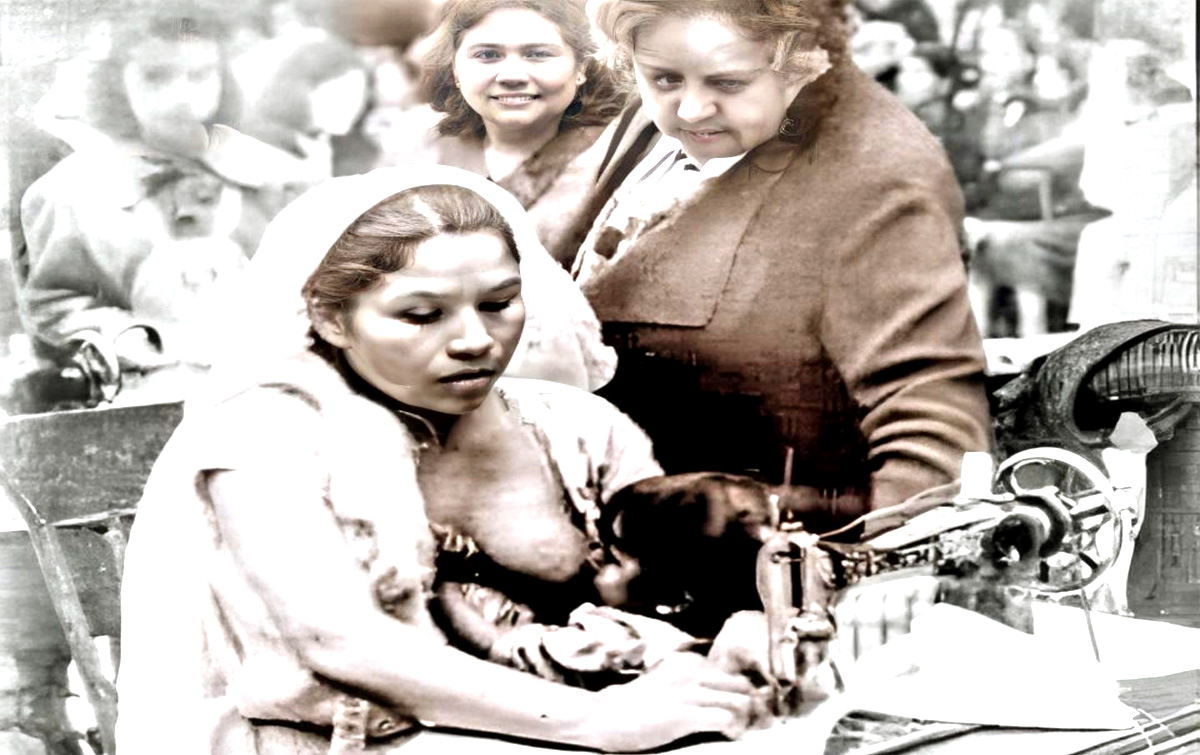A Snapshot of Sacrifice
A haunting 1913 photograph from Huntsville, Alabama, immortalizes twelve-year-old Millie May Crews standing solemnly beside her father, a stark emblem of the pervasive child labor crisis in the early 20th-century American South. Captured at the Merrimack Mill—a textile giant central to Huntsville’s economy—the image reveals Millie’s life as a weave room worker, a role she had endured for a year. Her story mirrors the plight of countless children forced into industrial labor to sustain their families, sacrificing education and childhood in an era of scarce opportunities.
Child Labor in the Early 20th Century: A National Crisis
By 1910, over 2 million children under 16 labored in U.S. factories, mines, and mills, with 18% of 10–15-year-olds employed nationwide. In Alabama, weak regulations permitted children as young as 12 to work, though enforcement was lax. The South’s textile industry, driven by low wages and minimal oversight, relied heavily on women and children, who comprised up to 25% of the workforce. Millie’s experience at Merrimack Mill—one of Huntsville’s largest employers, established in the late 1800s—was tragic.
The Crews Family: Economic Necessity and Sacrifice
Millie was one of three sisters contributing to the family income. While two worked grueling 60-hour weeks at the mill, earning mere cents per hour, the third was too ill to labor. Their father is a carpenter, and earned unstable wages, typical for non-industrial workers in rural Alabama. With adult mill workers earning around 8–8–10 weekly, children’s pay—often half that—was critical for survival. Families like the Crews epitomized the economic desperation driving child labor, where even skilled parents could not offset poverty.
Merrimack Mill: A Microcosm of Exploitation
The Merrimack Mill, part of a Northern-owned textile conglomerate, produced cotton goods under hazardous conditions. Workers faced deafening machinery, airborne lint causing respiratory ailments, and frequent injuries. Children like Millie, smaller and deemed “nimble,” were tasked with cleaning machines or threading looms, roles that risked limbs and lives. Despite the dangers, mills hired children for their affordability and compliance, perpetuating cycles of poverty and illiteracy.
Education vs. Survival: The Lost Childhood
In 1913, only 58% of Alabama children attended school, with rural attendance lower. Millie’s labor forfeited her education as a trade-off. Alabama’s compulsory education laws, enacted in 1907, required just 12 weeks of schooling annually, but enforcement was rare. For families like the Crews, survival outweighed literacy, trapping generations in industrial labor.
The Photograph’s Legacy: Catalyst for Reform
Though the photographer remains unnamed, the image echoes the work of Lewis Hine, whose documentation for the National Child Labor Committee (NCLC) exposed these injustices. Hine’s photographs, including those of Alabama mills, galvanized public support for reforms like the Keating-Owen Act (1916), which restricted child labor. Though struck down by the Supreme Court in 1918, it paved the way for future legislation, including the Fair Labor Standards Act (1938).
Millie’s Unseen Future and Enduring Symbolism
Historical records of Millie’s life post-1913 are scarce, a testament to the anonymity of countless child laborers. Yet her photograph endures as a cultural artifact, showcased in archives like the Library of Congress, reminding viewers of the human cost of industrialization. Today, Huntsville’s Merrimack Mill Park memorializes the site, blending history with urban renewal.
Conclusion: A Testament to Resilience and Reform
Millie May Crews’ portrait transcends time, symbolizing the exploitation of child labor and the resilience of families navigating economic despair. As the U.S. reckons with labor rights and equity, her story underscores the urgency of protecting vulnerable populations. The photograph remains a poignant call to honor past struggles while advocating for justice in workplaces worldwide.
Millie May Crews, Merrimack Mill Huntsville, child labor 1913, Alabama child labor history, textile industry child labor, Lewis Hine photographs, National Child Labor Committee, Keating-Owen Act, Fair Labor Standards Act, 20th-century child labor, Merrimack Mill Park, industrial revolution child labor, Southern textile mills, child labor reform, Lewis Hine NCLC.

